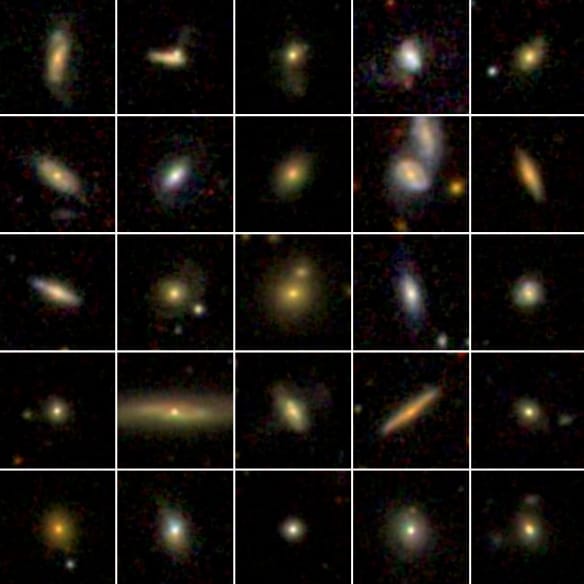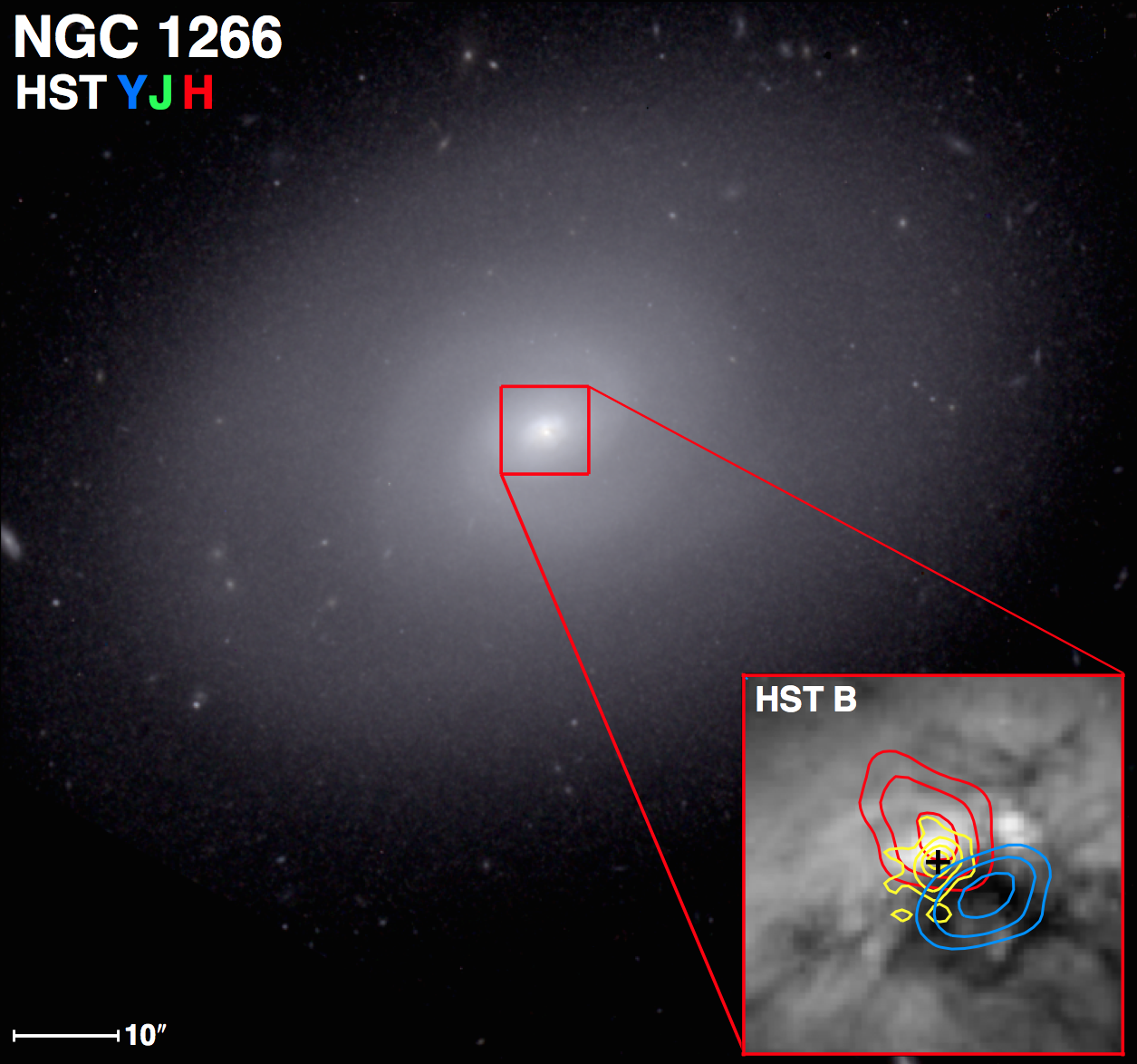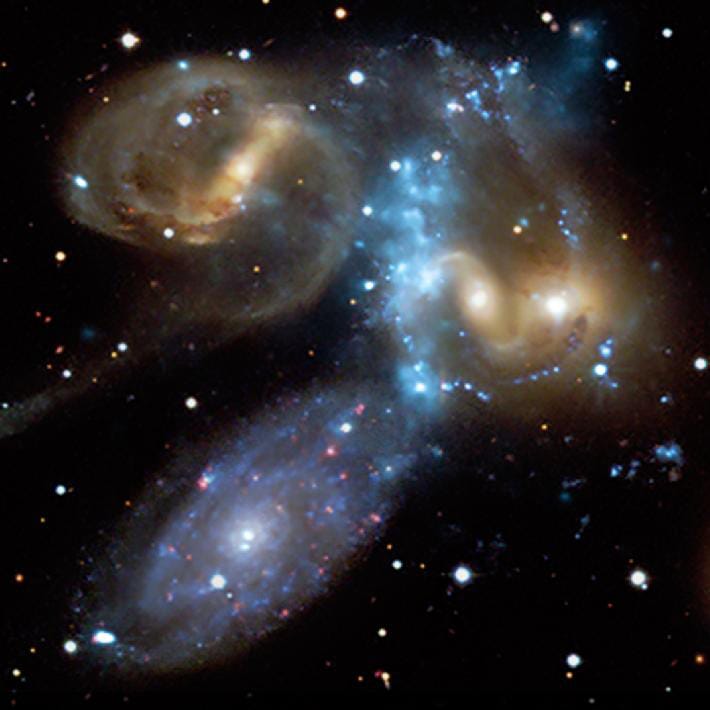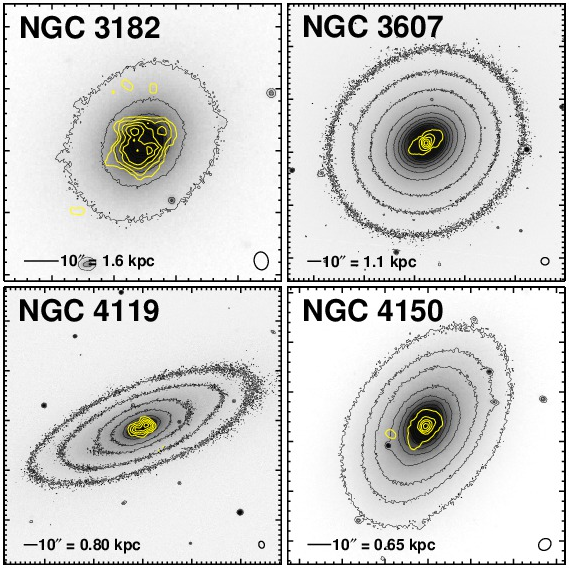Research
The Shocked POststarburst Galaxy Survey (SPOGS)
 The Shocked POststarburst Galaxy Survey (SPOGS) was designed to search for galaxies that are currently undergoing rapid transitions from blue cloud late-type spirals to red sequence early-type galaxies. SPOGs is a new way to search for these transitioning galaxies, using the spectra to pinpoint objects with shocks (via ionized gas diagnostics) and young stars (via Balmer absorption). This search was able to identify galaxies that appear to be on the cusp of transition, and our team is following up with additional telescopes to understand what mechanisms are responsible for this rapid transition.
The Shocked POststarburst Galaxy Survey (SPOGS) was designed to search for galaxies that are currently undergoing rapid transitions from blue cloud late-type spirals to red sequence early-type galaxies. SPOGs is a new way to search for these transitioning galaxies, using the spectra to pinpoint objects with shocks (via ionized gas diagnostics) and young stars (via Balmer absorption). This search was able to identify galaxies that appear to be on the cusp of transition, and our team is following up with additional telescopes to understand what mechanisms are responsible for this rapid transition.
NGC 1266: host to a compact, mass-loaded molecular outflow
 NGC1266 was serendipitously discovered during the ATLAS3D survey. Although it appears to be a normal, non-interacting early-type galaxy, appearances deceive. In the galactic nucleus, a larger outflow of molecular gas is taking place, through the action of an AGN. NGC1266 might be the first local example of secular (or non-major merger) quenching of star formation. With little to no evidence that it has undergone any recent major interaction, it is possible that the molecular gas was driven to the center by a minor merger, and the AGN is able to drive the gas out.
NGC1266 was serendipitously discovered during the ATLAS3D survey. Although it appears to be a normal, non-interacting early-type galaxy, appearances deceive. In the galactic nucleus, a larger outflow of molecular gas is taking place, through the action of an AGN. NGC1266 might be the first local example of secular (or non-major merger) quenching of star formation. With little to no evidence that it has undergone any recent major interaction, it is possible that the molecular gas was driven to the center by a minor merger, and the AGN is able to drive the gas out.
Mapping shock conditions in compact groups
 Hickson Compact Groups (HCGs) are sets of galaxies that are spatially related, but not yet dense or sufficiently numerous to be a part of a cluster, where the presence of hot intracluster gas is has a profound impact on the galaxies. The galaxies in these systems tend to undergo evolution rapidly, and therefore they make a wonderful testbed for the evolution of galaxies. I studied 14 galaxies in 12 HCGs that showed boosted warm molecular hydrogen emission (from Spitzer) and used CARMA to observe their star formation properties. Five of the HCG galaxies studied show suppressed star formation by a factor of 20-70!
Hickson Compact Groups (HCGs) are sets of galaxies that are spatially related, but not yet dense or sufficiently numerous to be a part of a cluster, where the presence of hot intracluster gas is has a profound impact on the galaxies. The galaxies in these systems tend to undergo evolution rapidly, and therefore they make a wonderful testbed for the evolution of galaxies. I studied 14 galaxies in 12 HCGs that showed boosted warm molecular hydrogen emission (from Spitzer) and used CARMA to observe their star formation properties. Five of the HCG galaxies studied show suppressed star formation by a factor of 20-70!
The CARMA imaging survey of nearby early-type galaxies
 I used CARMA to observe 30 early-type galaxies that are a part of the ATLAS3D survey, which were originally detected in CO with the IRAM 30m single dish in Pico Veleta, Spain. A total of 266 on-source hours were completed for the survey.
I used CARMA to observe 30 early-type galaxies that are a part of the ATLAS3D survey, which were originally detected in CO with the IRAM 30m single dish in Pico Veleta, Spain. A total of 266 on-source hours were completed for the survey.